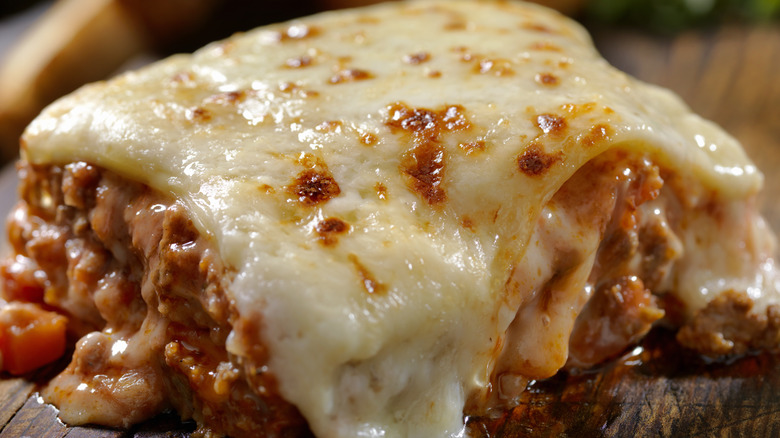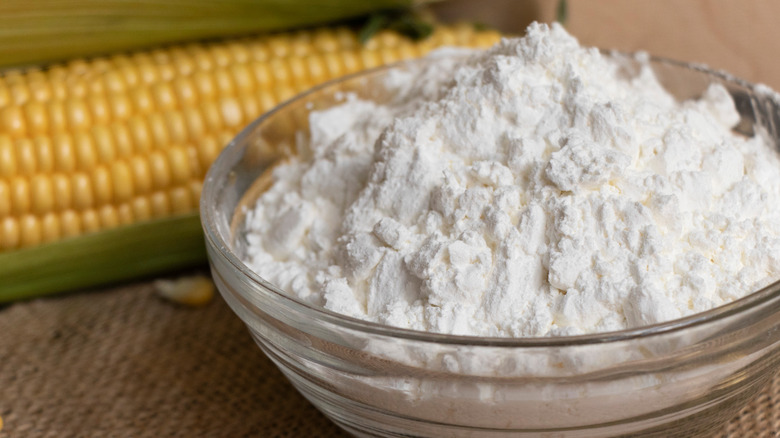Cornstarch Is The Key Thickening Ingredient To Prevent Soupy Lasagna
Lasagna is a cozy, comforting meal that packs all the ingredients and flavors of a classic bowl of pasta into a compact, layered casserole. However, its straightforward yet time-consuming preparation leaves plenty of opportunity for error. A common source of angst for lasagna makers is a soupy consistency, which is often the result of piling on a watery sauce that hasn't reduced enough.
Whether you're making a tomato and meat sauce from scratch or using a jarred sauce, you can thicken it with cornstarch to prevent the problem of a soupy lasagna. Cornstarch is a classic binding ingredient that won't affect the sauce's flavor and is much more effective than flour. It thickens sauces and soups by inflating in liquid the same way oatmeal, rice, or any other starch ingredient does, absorbing it in the process. Cornstarch is cheap and widely available at most grocery stores with the flours and baking products.
To use cornstarch as a thickening agent for lasagna sauce, add it in a slurry to the sauce as it simmers. A slurry consists of equal parts cornstarch and cold liquid. You can use water, broth, or cooking wine for a savory tomato or béchamel sauce. Once you've dissolved the cornstarch into the liquid, you'll pour it into a hot pot of sauce and stir to combine. The standard ratio for cornstarch to sauce is a tablespoon of cornstarch for every cup of sauce, but you'll need to adjust depending on how much thickening you need.
More tips to prevent soupy lasagna
Thickening your sauce with cornstarch is a good start, but there are subsequent steps to take to prevent soupy lasagna. Watery tomatoes aren't the only culprit for soupy lasagna: Oils from cheese and meat and water from lasagna noodles and vegetables can affect your lasagna's consistency. Draining excess fat from ground beef or sausage before adding it to tomato sauce is imperative to maintain a thick sauce. For cheesy layers, drier cheeses or lower-fat cheeses have less water and grease.
Furthermore, you don't need to pile on the sauce, or any layer for that matter. It's best to use a thin layer of sauce, dotting small dollops of it around the casserole dish. If you add vegetables, you need to cook them and drain them before using them in your lasagna recipe. Because you want thin layers, you won't need many vegetables. You can also combine vegetables with ricotta which will help absorb any extra water.
Another set of simple tips you can apply to lasagna occurs during the baking process. While many recipes suggest covering lasagna with tin foil before baking, this will inhibit liquid from evaporating. You can use tin foil for a portion of the baking process, but baking the dish uncovered for at least 70% of the cooking time will help thicken the lasagna. It's also important to let the lasagna cool for at least 20 minutes, allowing for excess water to evaporate and residual oils to coagulate and solidify.

